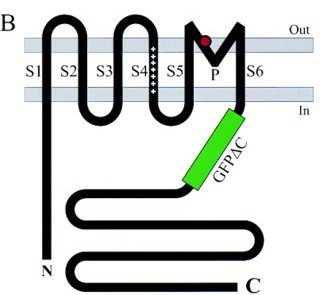
Measuring membrane voltage with fluorescent proteins
Abstract
Measuring signal transduction in large numbers of cells with high spatial and temporal resolution is fundamental to studying information processing in the nervous system. DNA-encoded sensors have an advantage in that they can be introduced into an organism noninvasively and targeted to specific brain regions, cell types, or subcellular compartments. A variety of chimeric proteins that report transmembrane voltage have been developed. The prototype sensor, FlaSh, is a green fluorescent protein fused to a voltage-sensitive K+ channel, where voltage-dependent rearrangements in the channel induce changes in the protein’s fluorescence. Subsequent sensors have refined this basic design using a monomeric voltage-sensing phosphatase domain from Ciona intestinalis and pairs of fluorescent proteins to produce a larger fluorescent signal. These sensors and their uses are discussed here.